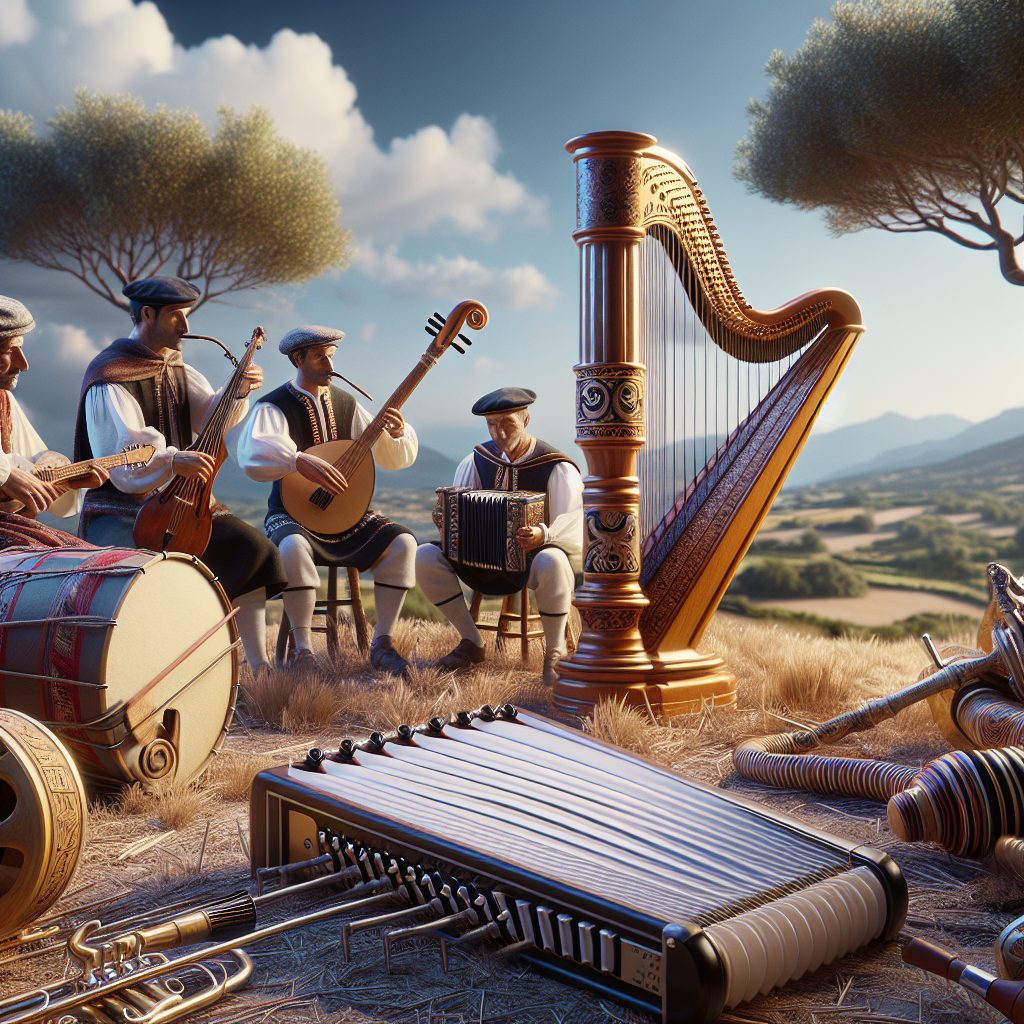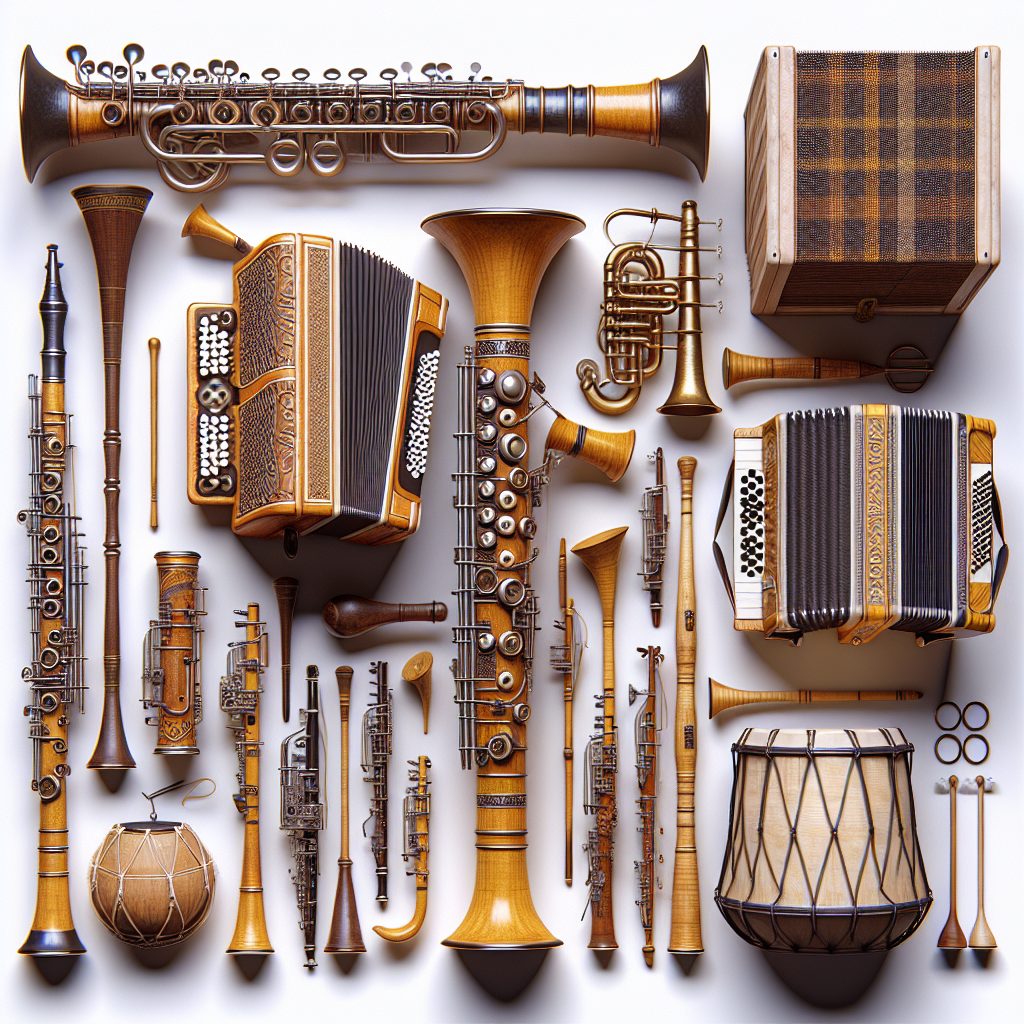Sardegna, an enchanting island nestled in the heart of the Mediterranean Sea, boasts a rich and vibrant musical heritage that is as diverse as its breathtaking landscapes. Defined by its rhythmic beats, haunting melodies, and rich vocal harmonies, this region’s musical tradition is a testament to its cultural richness and historical significance. From the spirited sounds of the launeddas, a unique Sardinian woodwind instrument, to the captivating chants of the tenores, a traditional vocal ensemble, Sardegna’s musical heritage is a window into its ancient roots and the interconnectedness of its people.
The impact of Sardegna’s musical heritage goes far beyond the boundaries of its geographical location. Its distinctive sounds have captivated audiences worldwide, attracting music enthusiasts and researchers alike. With its distinctive polyphonic singing style and remarkable improvisational skills, Sardinian music has influenced various genres, including classical, jazz, and world music. Moreover, the island’s music festivals, such as the prestigious Time in Jazz and Sant’Anna Arresi Jazz festivals, have become hotspots for musicians and spectators, showcasing the allure of Sardegna’s musical expressions. In this article, we will delve deeper into the key takeaways of Sardegna’s musical heritage, exploring its unique instruments, traditional compositions, and the profound impact it has had on the musical world. So, join us on this melodious journey as we unravel the enchanting melodies and captivating rhythms of Sardegna.
Key Takeaways
1. Sardegna’s musical heritage is rich and diverse, with a unique blend of ancient and modern influences.
2. The island’s traditional music, such as the haunting polyphonic chants and the vibrant dances, represents a significant aspect of its cultural identity.
3. Sardegnan folk instruments, including the launeddas, an orally transmitted musical instrument made of three reed pipes, contribute to the distinctive sound of the region’s traditional music.
4. The Gregorian chant tradition of the island’s religious communities has played a crucial role in preserving and passing on ancient musical practices through generations.
5. Sardegnan music festivals, such as the Sant’Efisio celebration, demonstrate the ongoing commitment of the local communities to showcase and continue to cultivate their musical heritage.
Sardegna Musical Heritage: Unveiling the Richness of Traditional Melodies
Exploring the Origins and Influences
Delve into the enchanting melodies of Sardegna and discover the origins of this unique musical heritage. Uncover the historical influences that have shaped and molded the traditional tunes heard throughout the island.
The Traditional Instruments of Sardegna
Take a closer look at the diverse range of instruments that play a crucial role in Sardegna’s musical expression. From the distinctive sounds of the launeddas – the traditional triple-reed woodwind instrument, to the rhythmic beat of the tamburinos, each instrument adds a distinctive flavor to the island’s musical tapestry.
The Different Genres and Styles
Discover the various genres and styles that have evolved within Sardegna’s musical heritage. From the hauntingly beautiful canto a tenore, characterized by its mesmerizing vocal harmonies, to the vibrant and energetic ballu tundu – a traditional dance accompanied by lively music, immerse yourself in the diverse musical traditions of the region.
Rituals and Festivals Celebrating Music
Unearth the significance of music in Sardegna’s rituals and festivals. Explore how music plays a vital role in various religious ceremonies and cultural celebrations, enhancing the spirituality and sense of community for the island’s inhabitants.
Preserving Sardegna’s Musical Heritage
Learn about the efforts being made to preserve and promote Sardegna’s musical heritage. Discover the initiatives taken to document and safeguard traditional melodies, ensuring that they continue to resonate with future generations and beyond.
Unraveling Sardegna’s Musical Legends
Dive into the captivating tales and legends that surround Sardegna’s musical heritage. From mythical figures who were believed to possess extraordinary musical talents to legendary performances that left indelible marks, unravel the stories that have shaped the island’s musical legacy.
Immersing Yourself in Sardegna’s Musical Landscape
Experience the allure of Sardegna’s musical landscape firsthand. Gain insights into the places to visit, festivals to attend, and events that showcase the soul-stirring melodies of the region. Immerse yourself in the atmosphere and let the music transport you to the heart of Sardegna’s musical heritage.
Tips for Discovering Sardegna’s Musical Heritage
- Attend traditional music concerts and performances organized throughout the island.
- Visit local museums and cultural centers dedicated to Sardegna’s musical heritage.
- Join workshops or classes to learn to play traditional Sardegnan instruments.
- Participate in traditional dances and events to experience the lively spirit of Sardegna’s musical culture.
- Engage with local communities and musicians to gain deeper insights into the traditions and history of Sardegna’s musical heritage.
Sardegna Musical Heritage
FAQ
1. What is Sardegna musical heritage?
Sardegna musical heritage refers to the traditional music and unique musical traditions of the island of Sardegna in Italy. It encompasses various forms of folk music, including vocal and instrumental performances.
2. How significant is Sardegna musical heritage?
The Sardegna musical heritage holds great cultural significance as it reflects the island’s history, traditions, and way of life. It is deeply rooted in the local culture and plays a vital role in preserving the island’s heritage.
3. What are the main characteristics of Sardegna musical heritage?
Sardegna musical heritage is known for its distinctive polyphonic choral singing, featuring multiple voices singing in harmony. It often involves a cappella performances, accompanied by traditional instruments such as the launeddas (Sardegna’s traditional triple pipes), guitar, and accordion.
4. Are there specific genres within Sardegna musical heritage?
Yes, Sardegna musical heritage features various genres, including cantu a tenore (a form of polyphonic singing), ballu tundu (a traditional dance song), and S’arruzzolada (a type of pastoral song). Each genre represents different aspects of Sardegna’s cultural and musical traditions.
5. How has Sardegna musical heritage evolved over time?
Sardegna musical heritage has evolved through centuries of cultural exchange and influences from neighboring regions. It has incorporated elements from ancient Mediterranean civilizations, Spanish and Moorish traditions, and even modern influences, while still maintaining its distinct identity.
6. Do Sardegna musical heritage performances include traditional costumes?
Yes, performances often include traditional costumes, known as “su copeddu.” These colorful garments, adorned with intricate embroidery, represent the island’s rich cultural traditions and are worn by musicians during traditional performances.
7. Are there any festivals or events dedicated to Sardegna musical heritage?
Absolutely! Sardegna hosts several festivals and events dedicated to its musical heritage throughout the year. These celebrations bring together musicians, dancers, and music enthusiasts, offering a unique opportunity to experience the vibrant and diverse Sardegna musical traditions.
8. Is Sardegna musical heritage recognized internationally?
Yes, Sardegna musical heritage has gained international recognition for its cultural value. It has been inscribed on UNESCO’s Representative List of the Intangible Cultural Heritage of Humanity, emphasizing its importance not only to the island but also to the global cultural landscape.
9. Can visitors experience Sardegna musical heritage firsthand?
Absolutely! Visitors to Sardegna have the chance to immerse themselves in the island’s musical heritage by attending traditional concerts, festivals, and even participating in workshops where they can learn to play traditional instruments or dance to the unique rhythms of Sardegna.
10. How can one support the preservation of Sardegna musical heritage?
Supporting local musicians, attending performances, and promoting awareness of Sardegna musical heritage are some ways to contribute to its preservation. Additionally, investing in educational initiatives that teach young generations about the importance of this heritage can help ensure its continuity.
Final Thought
The Sardegna musical heritage is a testament to the island’s rich cultural tapestry and the resilience of its people. The unique polyphonic singing and traditional instruments transport listeners to a world where tradition and modernity coexist harmoniously. It is not just a musical tradition; it is a living expression of the island’s history, identity, and connection to its roots.
Preserving and celebrating Sardegna musical heritage is crucial for future generations to appreciate and understand the island’s profound cultural legacy. Through engagements with this extraordinary musical heritage, we can further acknowledge its significance, fostering a deeper sense of cultural appreciation and interconnectedness.






